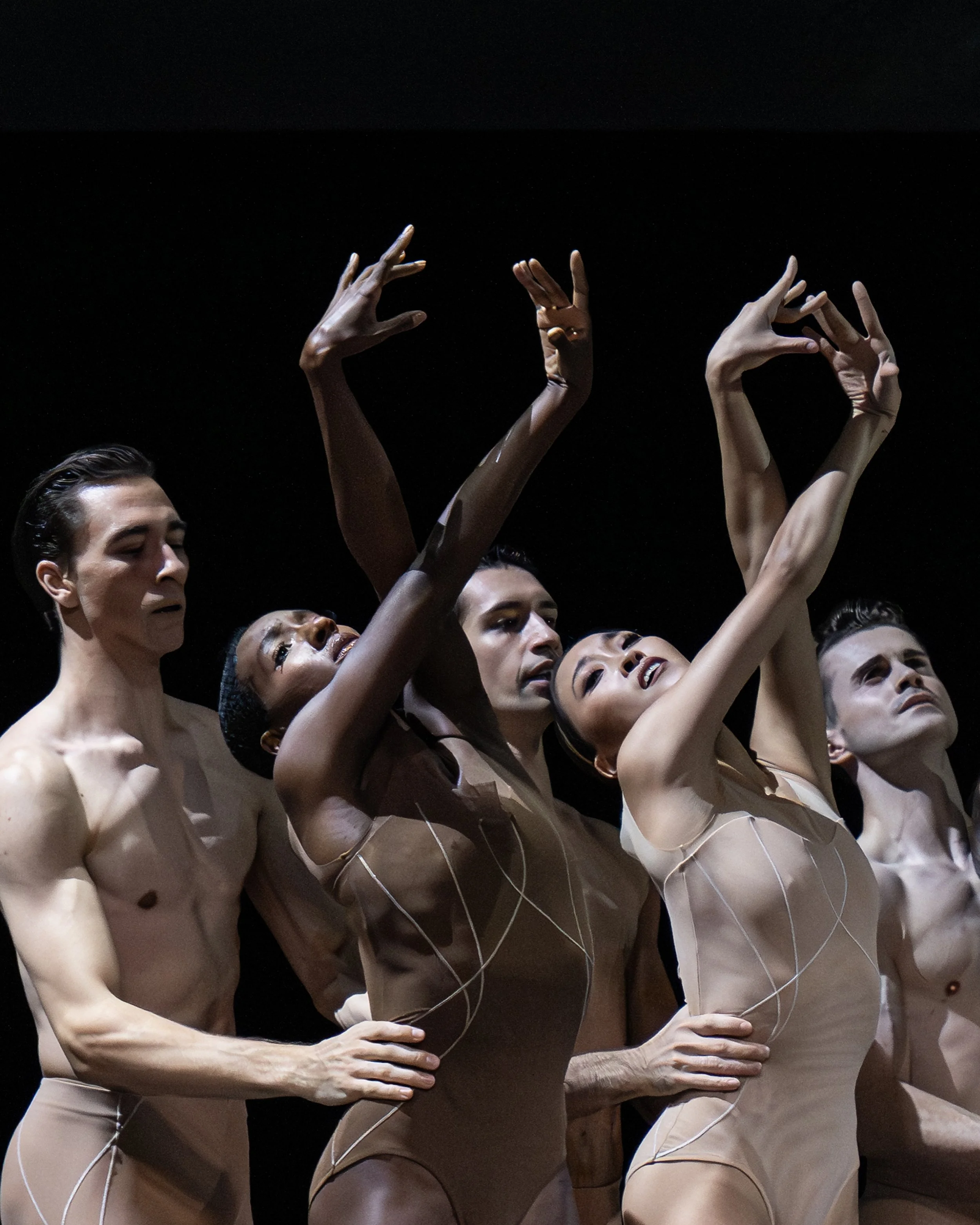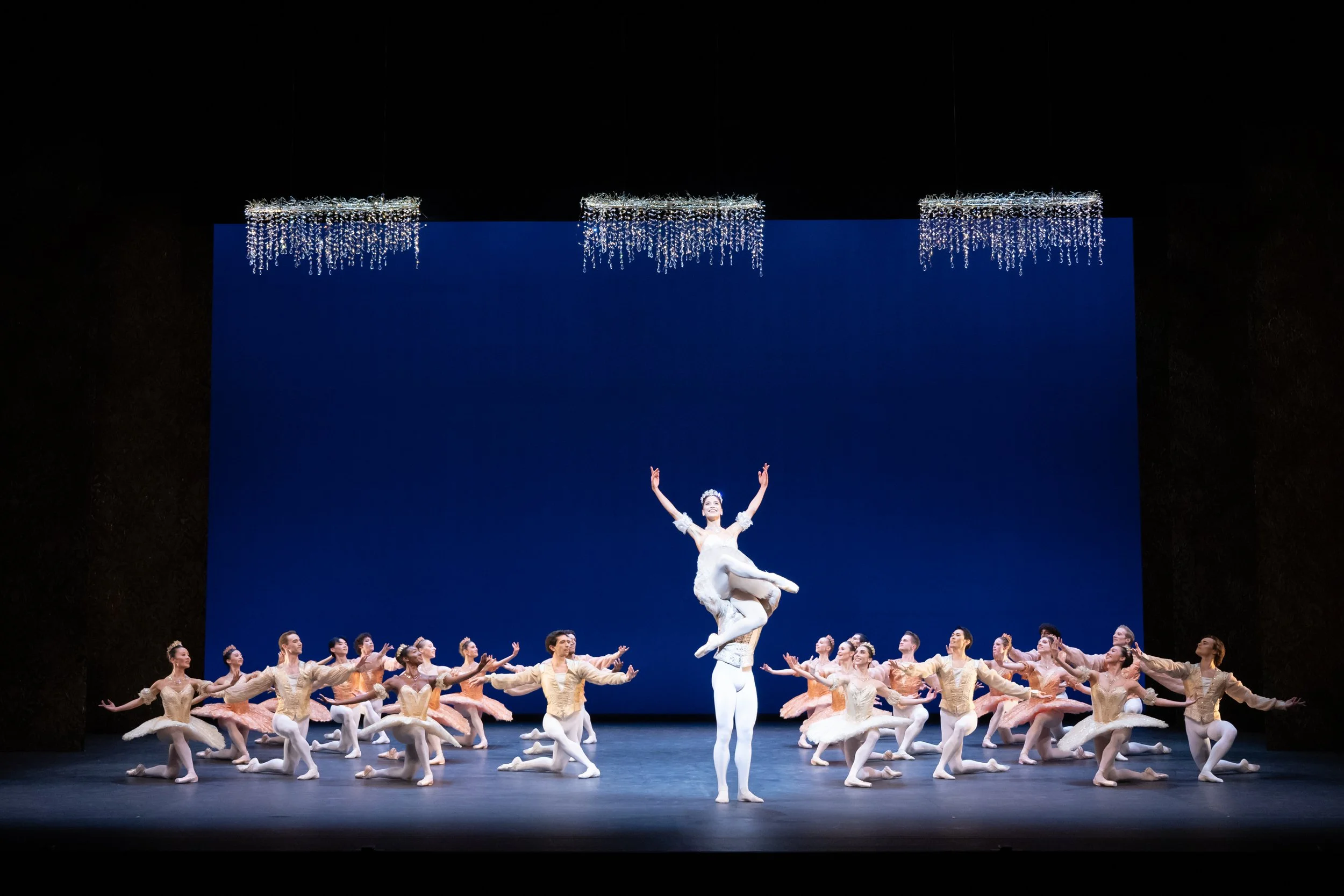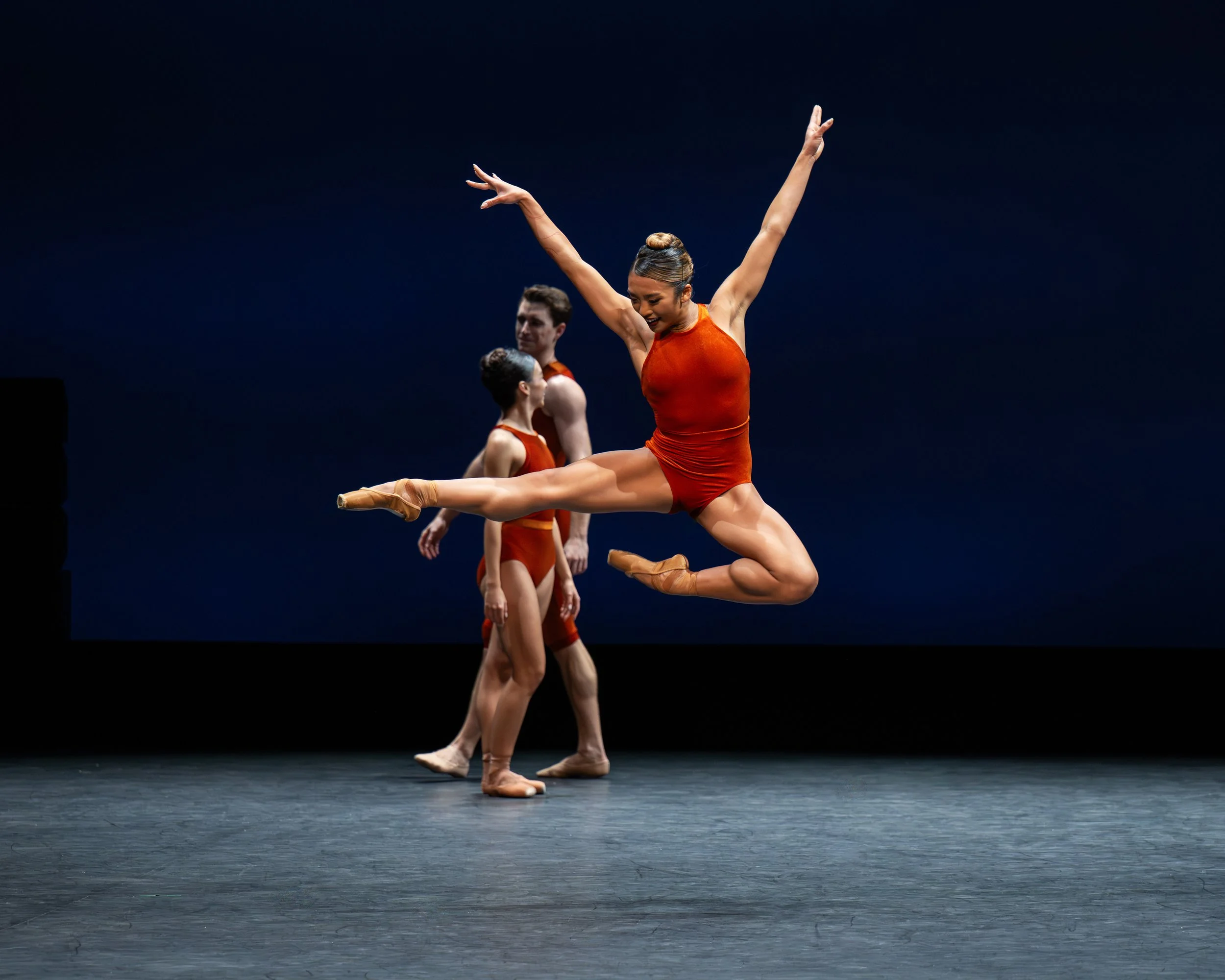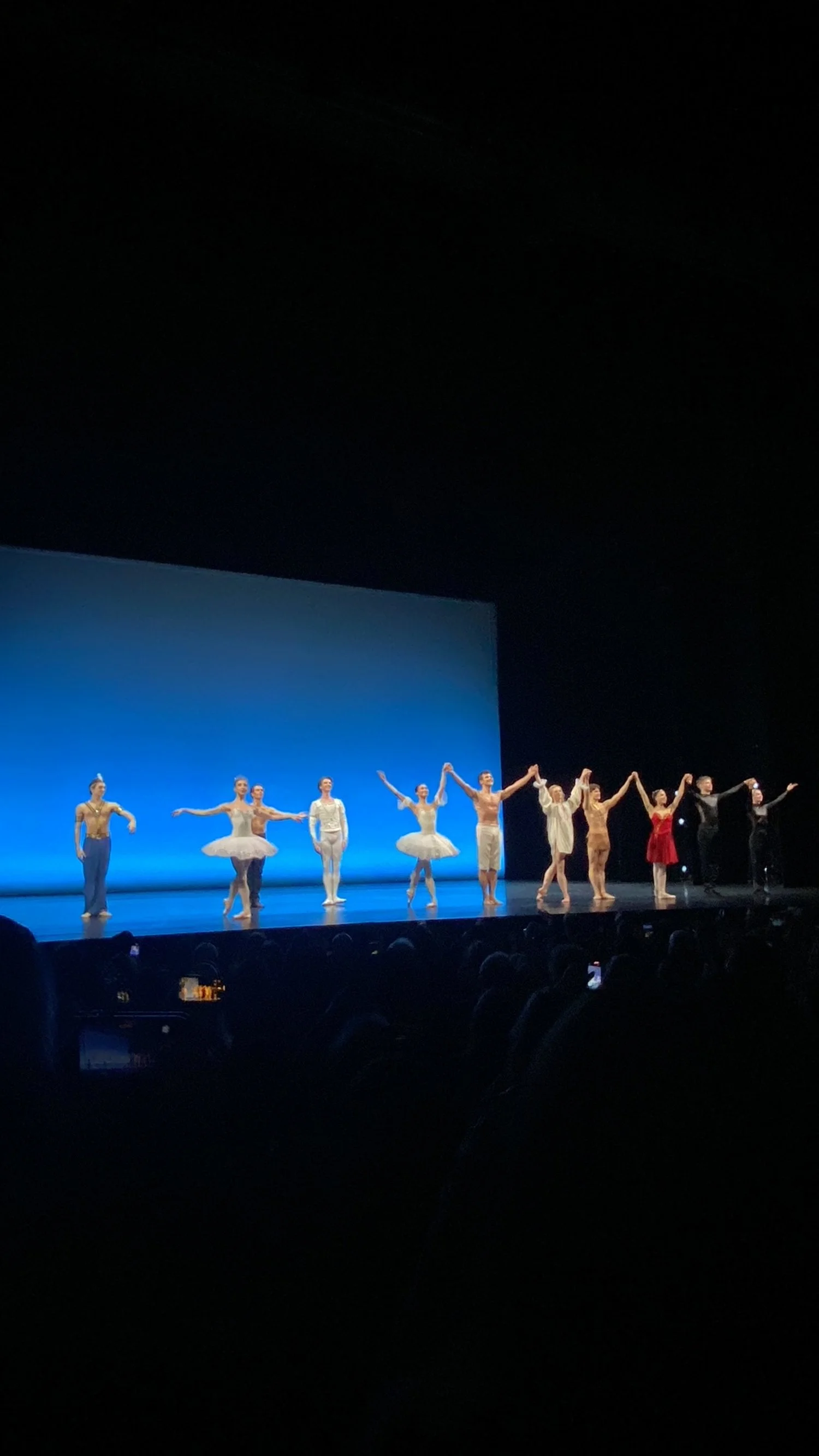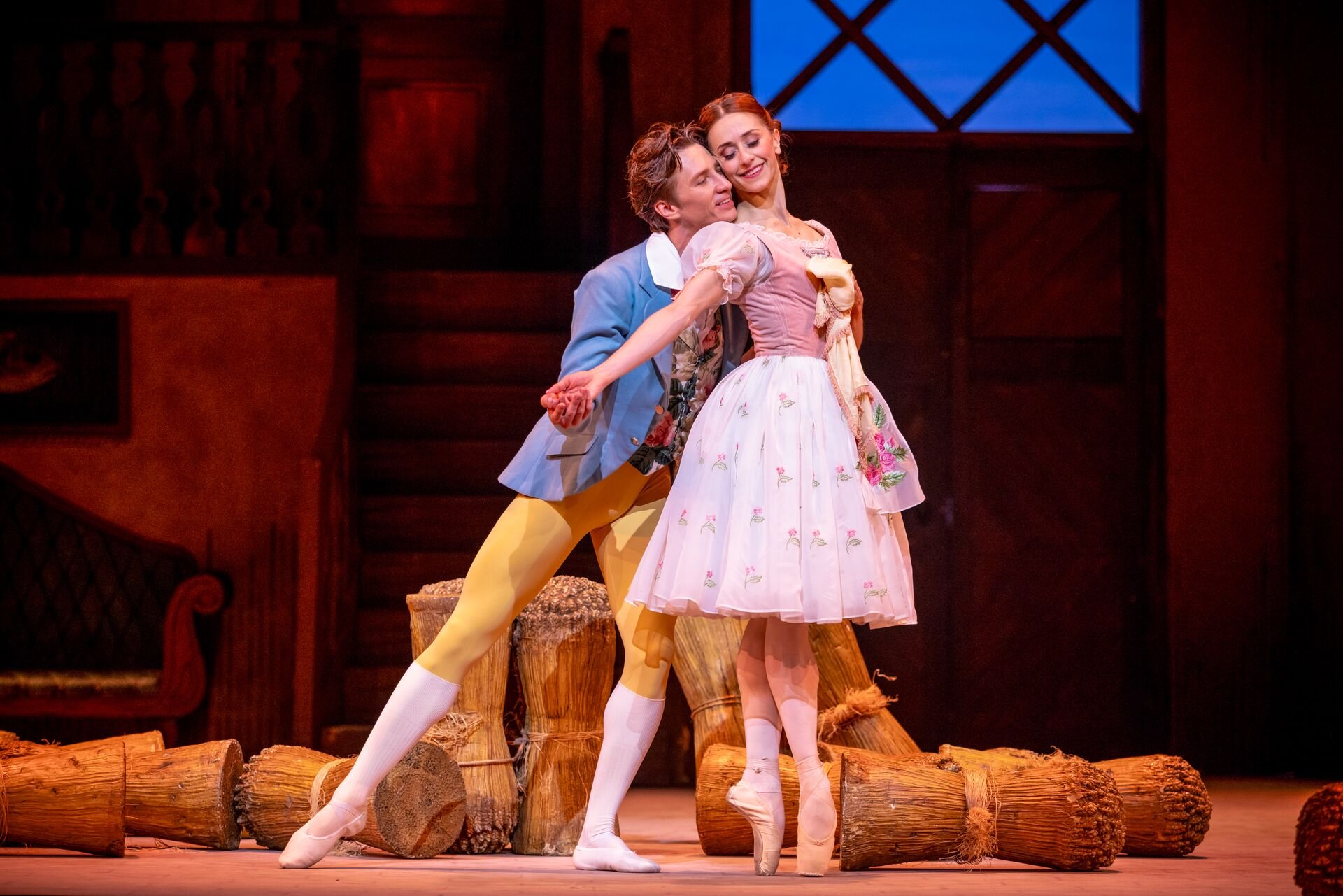R:Evolution, English National Ballet
English National Ballet dancers performing David Dawson’s Four Last Songs © Photography by ASH
Everything a ballerina “should” be was encapsulated in Four Last Songs by David Dawson.
Lithe, long limbed, light concealed by hidden strength, expressive and dainty. Set to music by Richard Strauss, the piece floated like a summer’s breeze as a continuous flurry of duets took to the stage to short works of classical song (performed live by soprano Madeleine Pierard). It was heavily reminiscent of MacMillan’s superb Requiem. Women were lifted and turned as if they were as light as a leaf, while limbs elongated further than should be possible, overlapping in subtle poses with those around them in moments of breath. Exquisite. Beautiful. A balm. The adjectives roll off the tongue.
This was the finale to English National Ballet’s four-part programme, and Season opener, R:Evolution. A study of influential choreographers through the 20th century to today, it was an eclectic history lesson taking us from pure beauty through the avant-garde and angular and back again.
English National Ballet dancers performing George Balanchine’s Theme and Variations © Photography by ASH
And where else to start than with the Father of American Ballet, George Balanchine. His Theme and Variations, set to Tchaikovsky, was a splendid, sparkling delight as shimmering tutus danced under the gaze of three chandeliers. The work was in safe hands with guest dancer Alice Mariani from Teatro alla Scala in Milan, who shone in moments of particularly intricate footwork, as did the corps de ballet. The piece was grand and imperial, with comparatively simplistic movement accompanied by walking and procession. It was on the whole neatly presented and a well-chosen springboard into this timeline of dance.
Swanice Luong performing Herman Schmerman (Quintet) © Photography by ASH
Balanchine’s musicality, and angular wrists, are evident in the 2023 work of Dawson and 1992 William Forsythe piece Herman Schmerman (Quintet). Forsythe’s abstract work did little for me when presented as part of the company’s evening dedicated to the choreographer earlier this year. Thom Willems’ score is especially off putting, with tracks switching off beat in a jarring manner. Definitely not the beauty of Tchaikovsky or Strauss. However, maybe it was the lowered expectation or knowledge of the oncoming assault to the senses (or maybe the music had been turned down), but this time the work just clicked. Dancers flitted in and out of the stage to perform extracts of Forsythe’s signature, highly detailed, reflexive movement, before nonchalantly walking off. It was like watching dancers in the studio, trying out moves from a wider programme before a run through later that afternoon. Rhys Antoni Yeomans stood out here as having an accomplished grasp of Forsythe’s intricate style, but the rest of the troupe weren’t far behind. ENB really are masters of Forsythe, and the UK dance scene is all the better for them championing his work.
Emily Suzuki and Rentaro Nekaaki performing Martha Graham’s Errand into the Maze © Photography by ASH
Talking of shows that will be better on a second viewing, Martha Graham’s Errand into the Maze was confusing. At first glance a simple retelling of the myth of the minotaur, I’ll admit to having to watch archival footage and analyse the programme notes after the show to get my head around it. It opened with a woman flexing her back to the beat of drums before stepping across a piece of rope and gathering it up to wind around a wooden, two-pronged sculpture. Later, her foe, a man with horns and arms held above his head with a stick, continuously jumps in a tortuous scene taken from the Giselle playbook (in Act 2, Giselle’s lover is forced to dance in revenge by jumping continuously). Created in the same year as Theme and Variations (1947), this animated work showed us how, in the early 20th century, modern dance pioneers such as Graham were breaking away from the world of ballet that had dominated western culture for so long: there was rarely a moment of ballet vocabulary in the entire work. It felt fresh but also of its time (especially musically). It’s just a shame that neither of the later pieces (Forsythe and Dawson) demonstrated how her legacy influenced later creatives. A disappointing programming oversight.
★★★★
R:Evolution by English National Ballet
Sadler’s Wells, London / 1 October 2025
Press ticket
Find your next dance show
All dance shows happening across the UK, all in one place. Only on Like Nobody’s Watching.
Check out these related reviews
🪩 Brought to you by Like Nobody’s Watching. Read about our mission →

